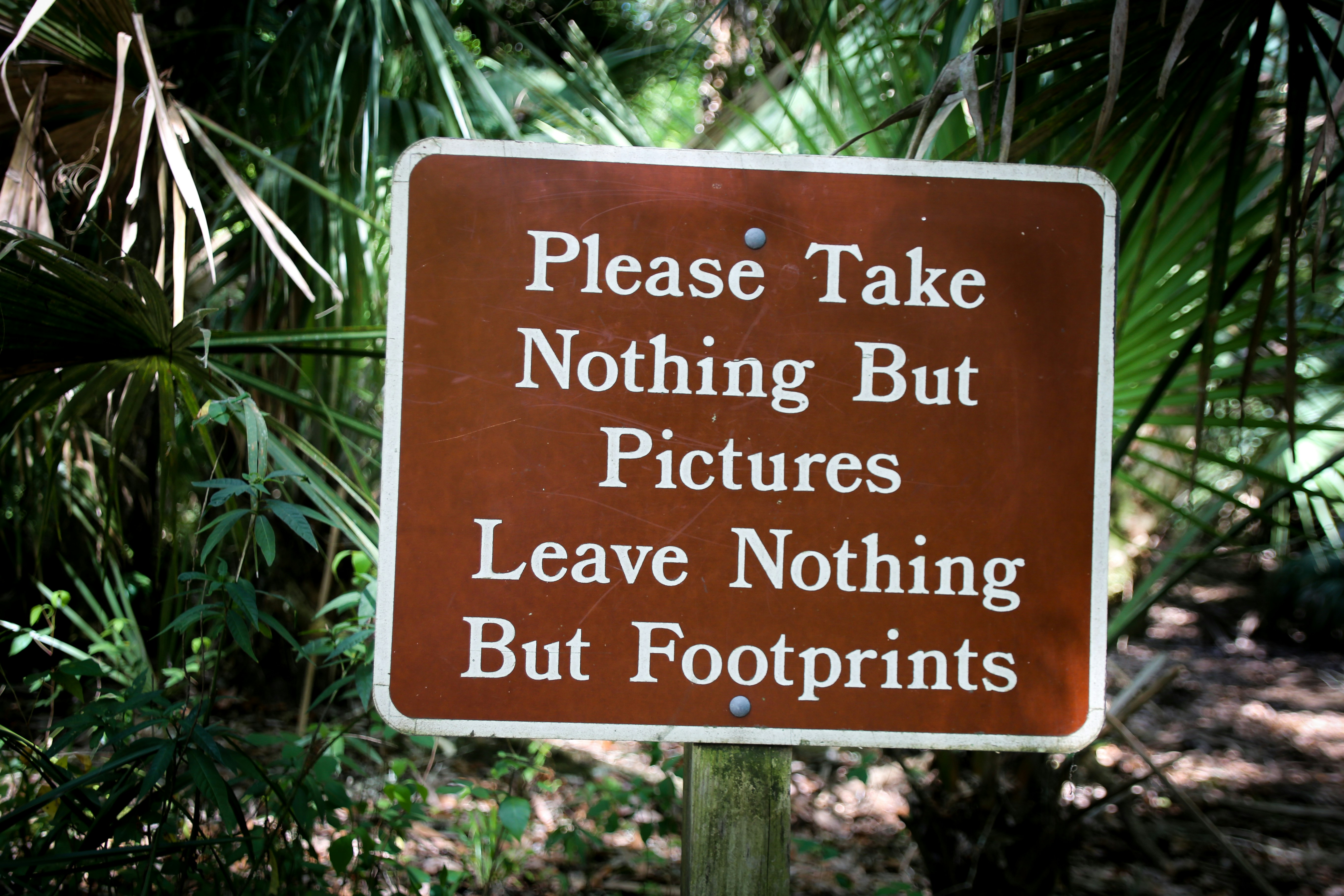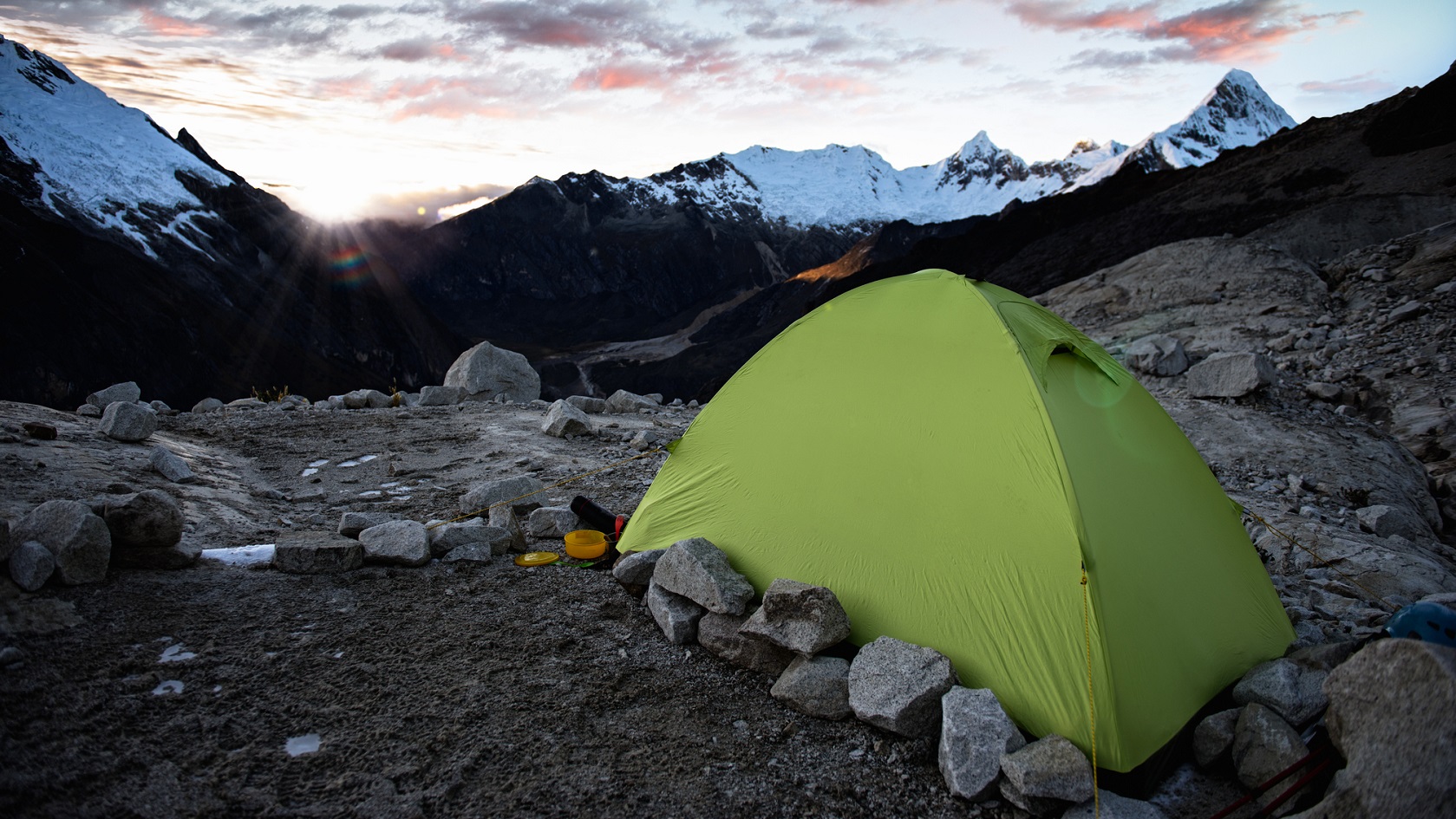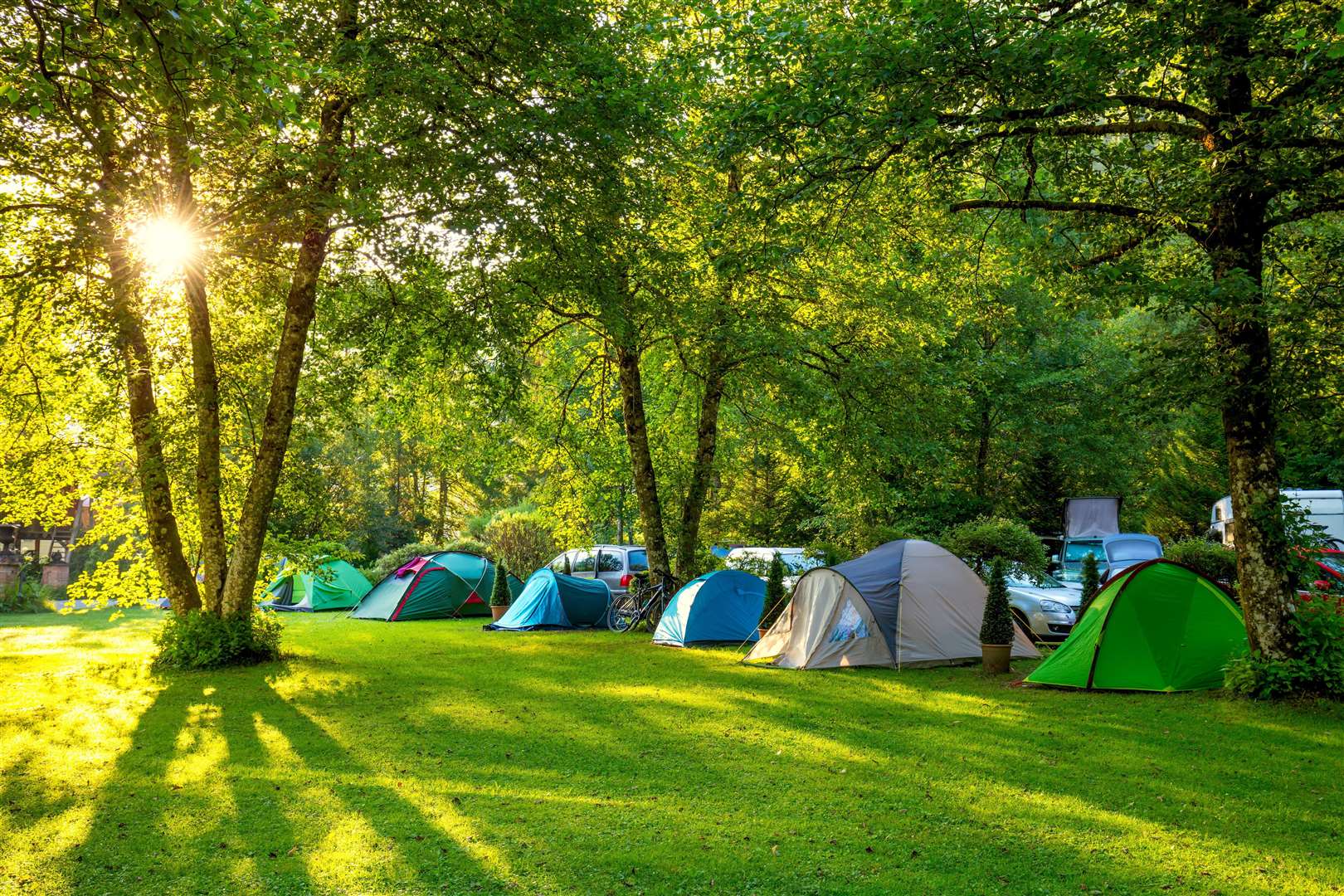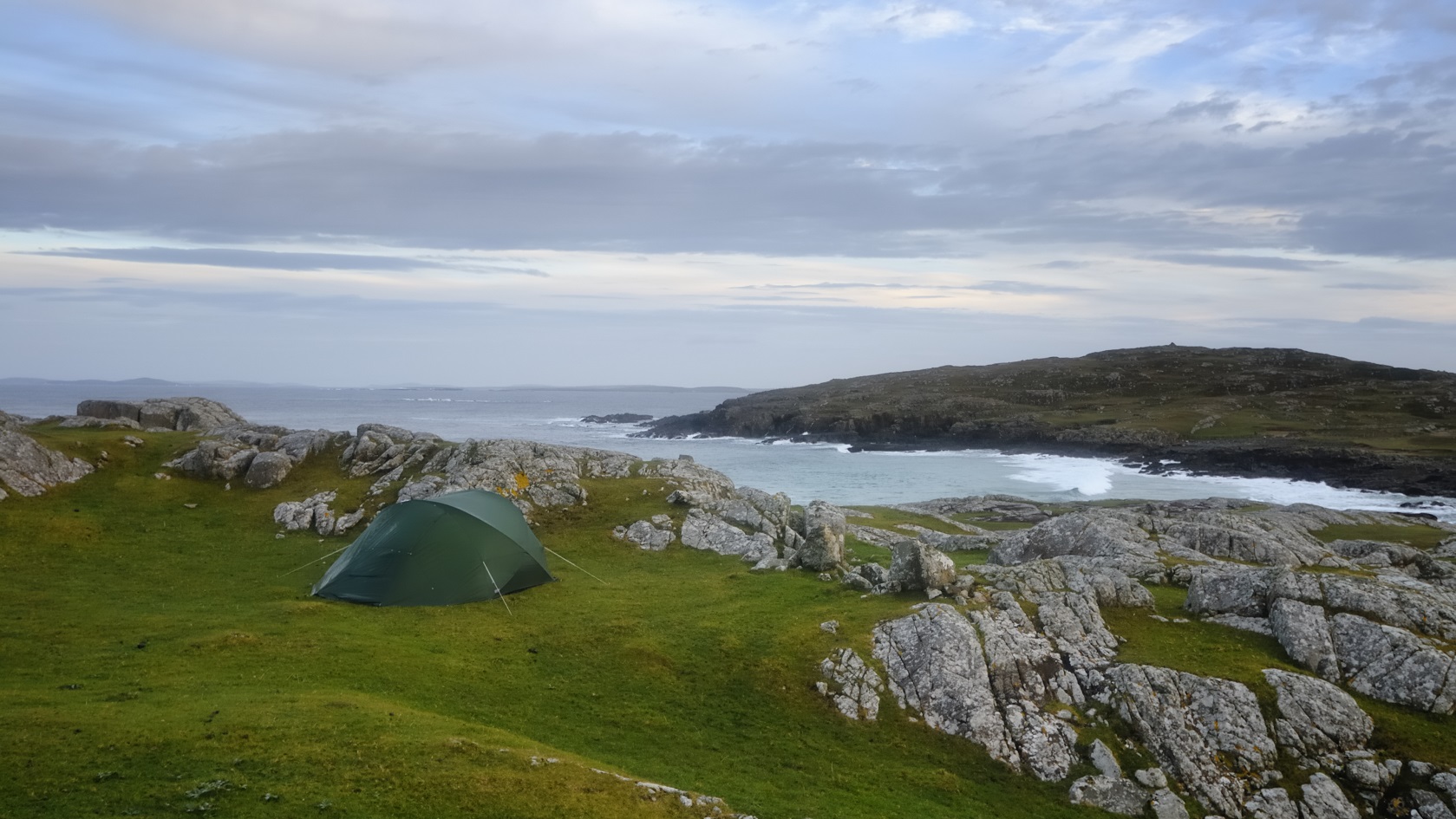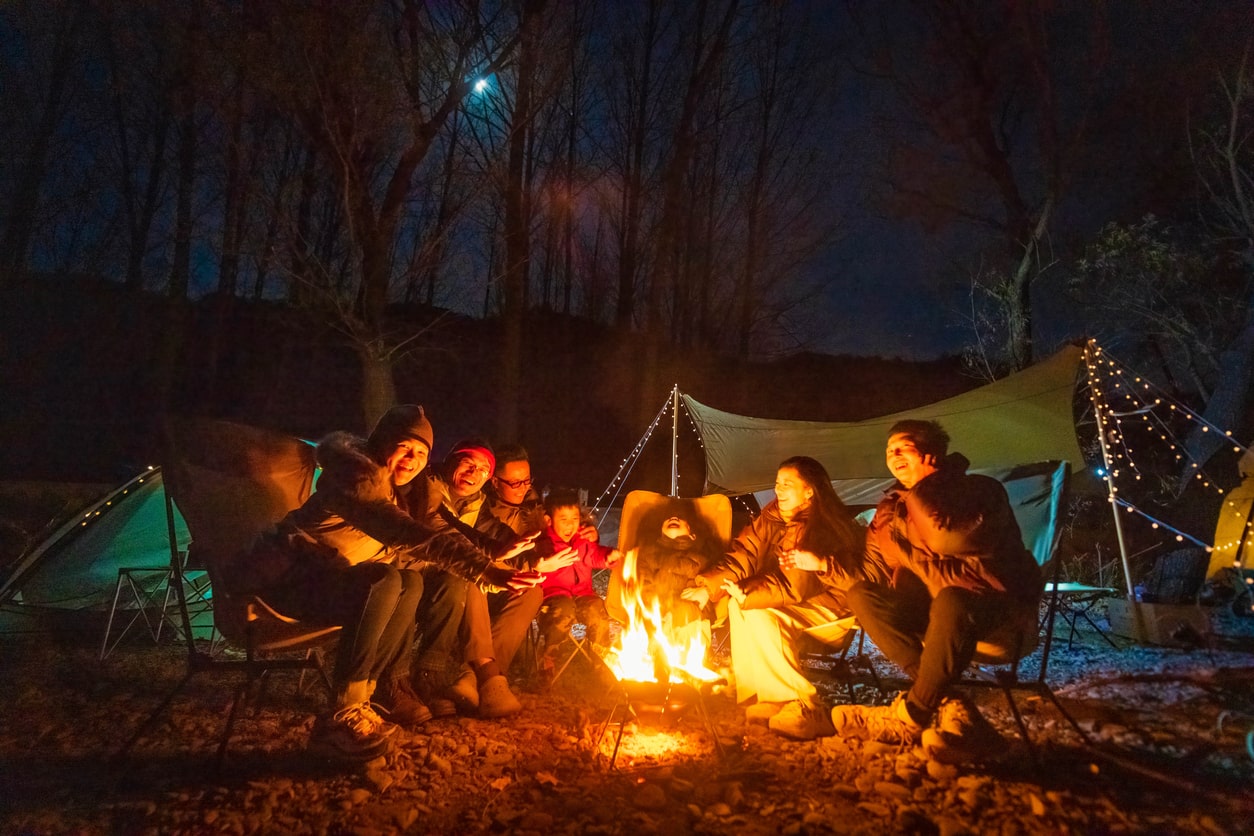Leave No Trace is an ethical code designed to educate people on how to enjoy the outdoors responsibly. The aim is to preserve an untraceable environment for human-powered recreation, while safeguarding vulnerable natural areas and wildlife habitats. The code revolves around 7 principles:
Plan Ahead and Prepare
Travel and Camp on Durable Surfaces
Dispose of Waste Properly
Leave What You Find
Minimise Campfire Impacts
Respect Wildlife
Be Considerate of Other Visitors
1. Plan Ahead and Prepare
Planning ahead and preparing means taking the time to think through your trip carefully before you go. This includes considering your chosen destination, time of year, weather, equipment needs, skill level, group size and camping/travel impacts. Proper planning gives you foresight to prepare for conditions, avoids last-minute scrambling and prevents avoidable harm to yourself and the environment. For example, in winter check weather and avalanche forecasts. Research your route and destinations. Factor in rest days and share detailed itineraries with trusted contacts as a safety net. Strategically arrange travel timing to avoid crowding on bottleneck attractions. Arrive early before throngs of people or visit during off-peak hours. For overnight trips, aim for less popular campsites. Consider splitting large groups into smaller tents and cooking units to localise impact. A little forethought prevents logjams and overrunning destinations.
Assess your group's cumulative outdoor experience and fitness to match a suitable adventure challenge. Novices attempting advanced mountaineering or backcountry skiing can spell disaster. Make sure everyone shares comparable conditioning and skills to safely achieve your goal. Arrange any necessary lessons or guidance beforehand. Evaluate seasonal factors that determine access. Public lands impose seasonal closures to protect wildlife habitats. Spring mountain trails could remain snow-packed. Call land managers to check conditions and closures. Time trips outside peak season when possible and be flexible if altering plans due to adverse impacts.
Meticulously plan equipment, food and clothing ahead of time. Create thorough checklists catered specifically to your activity and environment. Having proper gear prevents avoidable mishaps. Bring necessary navigation/communication devices, first aid supplies, tools, fuel and water treatment systems. Account for water availability or caches needed along the route. Always pack ample insulation, weatherproof layers and emergency shelter appropriate for the conditions.
Scrutinise leave-no-trace camping setups. Favour free-standing tents over staked designs that leave lasting imprints. Use equipment that concentrates impact such as stoves instead of fires. Be self-reliant with dedicated cook kits, toilet supplies and trash bags. Prepare food with little waste - choose lightweight items with minimal packaging. Repackage in reusable containers. Understanding gear needs for your specific trip establishes leave-no-trace practices from the start.
Thorough planning gives you familiarity with regulations and required permits for the area. Regulations cover group size limits, camping zones, campfires, fishing/hunting policies and wildlife safety. Permits regiment popular wilderness zones to balance recreation and conservation. Be sure you meet qualifications and apply well in advance as quotas fill quickly. Understand all guidelines to follow proper wilderness etiquette.
Leave No Trace is best learned through formal training programs for direct experience. Even seasoned professionals benefit from regular refreshers incorporating the latest techniques. Seek qualified instruction offering field-based skill workshops tailored to your activity - such as backcountry cooking, winter camping or mountain navigation. Guides, clubs and land managers are all good education resources.
2. Travel and Camp on Durable Surfaces
The second Leave No Trace principle targets travel and camping on durable surfaces. The objective is to avoid fragile vegetation, soils and shorelines that are easily damaged by recreational wear and tear. Instead, favour wilderness zones offering hardier surfaces that withstand repeated traffic without showing lasting impact. This allows the landscape to rejuvenate between seasonal uses.
Scrutinise terrain carefully in choosing tent sites. Seek natural beds like rock slabs, gravel bars, sand beaches, established campsites or hilltop meadows covered with sturdy plants. Avoid delicate meadows cushioned with moss, lichen and tundra which bruise underfoot. Grasslands seem enticing but remove protective vegetation leading to eroding soils. When possible, concentrate on camping where impacts already exist instead of expanding into pristine zones. Monitor sites and rotationally shift tents to prevent overuse damage.
Similarly, stick to supportive surfaces on travel routes. Follow rock, snowfields, gravel streambeds or maintained trails which easily absorb passage without trace. Avoid venturing cross-country over fragile stone fields, cryptobiotic crusts, muddy bogs or dense shrubs. Never cut switchbacks which exponentially expands erosion. Walk single file - dispersion over wide zones multiplies impact severalfold. When trail encountering streams, watch bank edges for sensitive soils and instead use rocks or logs to cross.
In popular areas, designated camping zones help localise overnight impact. Seek established sites with infrastructure to contain heavy use. Developed sites often mandate leave-no-trace regulations. Take advantage by utilising provided tent pads, food storage boxes and toilet facilities. Though less wilderness solitude, sacrificing genuine remoteness on peak travel corridors is a necessary compromise.
During lengthy trips, proactively prepare rest stops and camps. On long treks, scout campsites ahead of time. Look for pre-impacted zones. At rest stops, halt on durable surfaces instead of trampling roadside vegetation. Coordinate tent sites at basecamps so different groups reuse hardier areas over repeat days. A bit of foresight preserves surroundings remarkably well.
3. Dispose of Waste Properly
The third Leave No Trace principle addresses proper waste disposal. Any trash left behind blights landscapes and endangers wildlife. Pack out everything you bring including leftover food, litter and hygiene items. Proper waste removal Safeguards wilderness and maintains ecosystem welfare.
Prepare a portable toilet system for containing human waste. Use a designated high-density bag with absorbent powder pre-loaded into a leakproof box. Carry hand sanitiser and toilet paper. Select a private site at least 200 feet from water sources, choosing durable surfaces like stone or sand. Dig a 6-8 inch cat hole to bury solid human waste only - do not put any trash in! Liquids remain in the bag box for pack-out disposal. Replace the soil when finished.
For kitchen waste, use strainers to remove food bits when cleaning dishes. Carry out strained water instead of dumping it over land allowing ground absorption. Collected scraps go into a dedicated trash bag. Avoid generating excess rubbish by limiting packaged items, buying bulk and planning recipes carefully. Carry an extra bag for an emergency stash from other hikers if needed.
Never attempt to burn or bury rubbish. It will likely remain as animals may spread trash about. Trash is unsightly and detracts from the area's natural state. Even biodegradable items like orange peels take years to break down. Rotting food waste attracts scavenging animals that become habituated losing natural foraging behaviours.
4. Leave What You Find
The fourth principle advises leaving nature undisturbed by avoiding collection or destruction. Allow other visitors a sense of discovery by leaving objects of interest where found. Modern removal through collecting or vandalism leaves the area unnaturally barren with lost cultural artefacts.
Leave plants, rocks, antlers, feathers, fossils, artefacts and other treasures as found for others' enjoyment. Be mindful that even collecting small items amounts to incremental depletion over high-traffic zones. Removing biological specimens disrupts the ecological balance and species distribution. Every plant plays a role in supporting associated organisms up the food chain. Picking flowers or harvesting edible plants cripples regeneration the following season.
Take only pictures - leave only footprints. Study interesting objects and geological features in place. Do not scatter assemblages of bones, rocks, ant hills or other natural collections. Never touch fragile ecosystems like coral reefs - even accidental kicks and nudges accumulate lasting devastation from countless divers. When hiking off-trail, take care not to disturb faint relics from past indigenous cultures easily lost.
Graffiti carved into trees, rocks or landmarks leaves permanent scarring. Stick to photography for documenting your travels without leaving a mark. Future generations equally deserve pristine vistas. Vandalism demonstrates ignorance and a lack of respect for natural landscapes. Even if you feel the urge to leave a sign of your journey, consider the cumulative impacts from thousands before you do the same. Carry Sharpie and sticky notes to avoid tempted vandalism. Sign official guest books if available.
Building unauthorised structures like rock cairns, fire rings, lean-tos or dams further encroaches altering the environment. Dismantle any piles left by previous visitors to harmonise surroundings back to their original condition. If adding a new cairn for navigation or memorial, carefully dismantle it upon return.
5. Minimise Campfire Impacts
The fifth principle minimises campfire impacts. Campfires seem integral for an authentic outdoor experience yet carry substantial consequences disrupting leave no trace of ecology. Fires deplete wood resources, threaten wildlife habitat and return significant air pollution even from remote regions. Consider foregoing fires as the lightest impact option. However, when deemed necessary given safety or morale, keep fires small using established rings, pan supports and mound hearths to contain damage.
Scrutinise seasonal fire bans across all public lands. Dry summer months escalate wildfire hazards,, especially in western states. Year-round bans are expanding as climate change increases fire risk. Violating bans risks endangerment and steep fines. Instead,, use contained stoves even where fires are allowed as a safer alternative. If building fire, first confirm you meet guidelines for location specifications, established fire rings, burn bans and proper extinguishing afterwards.
To limit wood consumption, favour fossil fuels like liquid gas canisters over wood burning when possible. Haul out ashes another leave no trace strategy instead of dispersing locally. Research dispersed camping zones that permit burying ash residue. Fires strip live standing timber; instead,, seek downed wood that is dry and pencil-width size for best low-smoke burns. Avoid resin-rich soft conifers or rotted punky logs. Harvest modest volumes, using saws instead of breaking branches by hand.
Circle stones to contain flames and prevent underground roots from catching. Carefully manage feeding wood fuel and airflow to maintain a clean burning fire. Let substantial embers burn down overnight rather than dousing excess water which causes greater landscape damage. In the morning, verify the cooled ash by putting your hands near the ashes before dispersing the residue.
6. Respect Wildlife
The sixth principle respects wildlife's's well-being through proper food storage, appropriate distancing, adherence to regulations plus keeping pets under control. These practices limit undue wildlife habituation caused by haphazard human behaviour. The goal is to allow animals to exhibit natural behaviours, feeding patterns and living space to sustain healthy diverse populations long-term.
Wild creatures easily grow dependent on careless human food sources. Always use effective storage methods like hard-sided lockers, suspended gear bags, bear canisters or animal-proof bags. Properly store all scented items day and night. Leave excess packaging behind to avoid contamination. Washing dishes promptly and packing out all food waste is critical. Never intentionally feed animals or offer handouts. Unnatural food conditioning causes over-predation, territory conflicts and disease transmission.
Give animals ample buffer distance. Use binoculars or telephoto lenses for unobtrusive observation. Back away if wildlife alters movement signalling disturbance. Avoid startling cliff-dwelling birds provoking panicked fledglings. Never surround, chase or throw objects toward organisms. Quick evasive responses indicate you encroached too closely!
Follow fishing/hunting laws and regulations based on species protection status, populations, season dates and tag quotas. Illegally stocking waterways displaces endemic species. Use sporting practices which minimise harm and suffering. Never waste killed animals.
Leash pets when others are present for courtesy and wildlife safety. Guard dogs overnight. Uncontrolled domestic animals disturb landscapes and threaten wild populations. Always pack out pet waste.
7. Be Considerate of Other Visitors
The final Leave No Trace principle practices general courtesy towards fellow visitors for their best outdoor experience as well. With quiet voices and noise discipline even in groups, other people's solitude remains undisturbed. Everyone ventures outdoors for a reprieve from human crowds after all!
When encountering other parties, customarily yield to downhill trekkers or horseback riders for the easiest passage. Stand aside well before intersecting to avoid alarming animals. Signal your presence audibly around blind corners to prevent jarring surprise meetings. Be friendly by offering encouraging greetings to passersby.
Noise travels easily over a distance in natural amphitheatres. Keep loud disruptions low by avoiding shouting, public arguments, loose pets, screeching pack adjustments and similar squalls. Disperse radios into private tent spaces instead of open public use. Quiet hours after dark are highly recommended even playing acoustic instruments softly at campsites.
Arrange large basecamp layouts thoughtfully. Centralise communal zones for cooking, socialising and toilet facilities. Face tent doors inward towards camp centres. Set sleeping areas further out in a scattered ring at the perimeter. This establishes private nesting nooks behind the central public sphere. Neighbouring groups will appreciate the psychological comfort.
Related articles

Let us know you agree to cookies
We use marketing, analytical and functional cookies as well as similar technologies to give you the best experience. Third parties, including social media platforms, often place tracking cookies on our site to show you personalised adverts outside of our website.
We store your cookie preferences for two years and you can edit your preferences via ‘manage cookies’ or through the cookie policy at the bottom of every page. For more information, please see our cookie policy.

